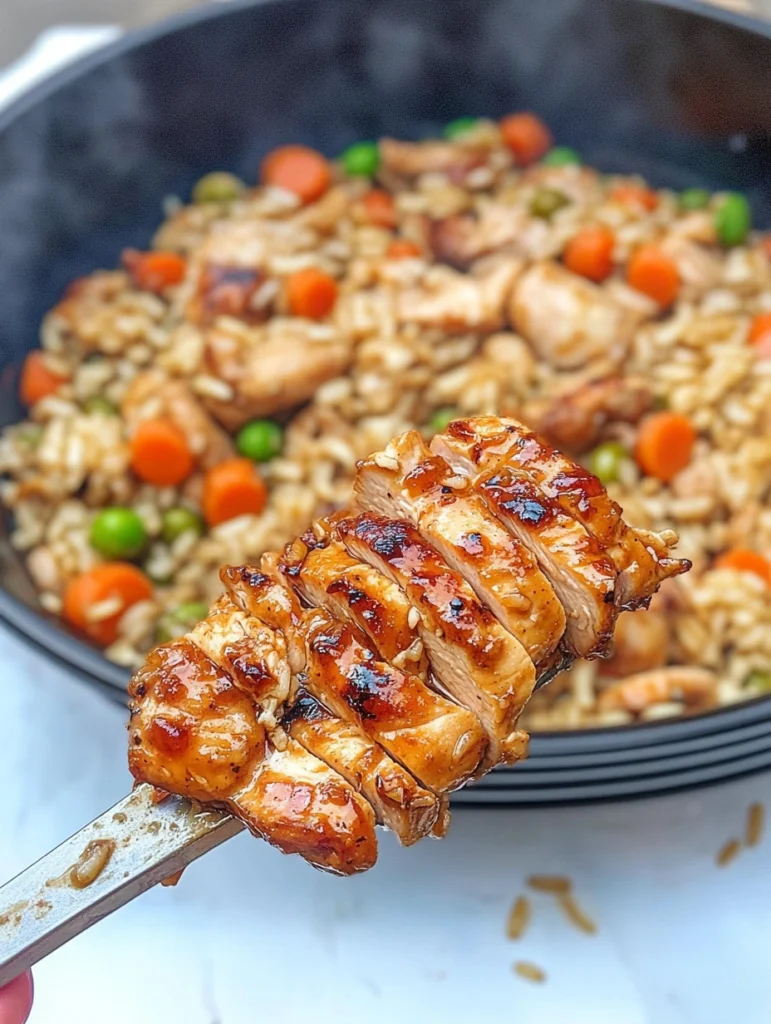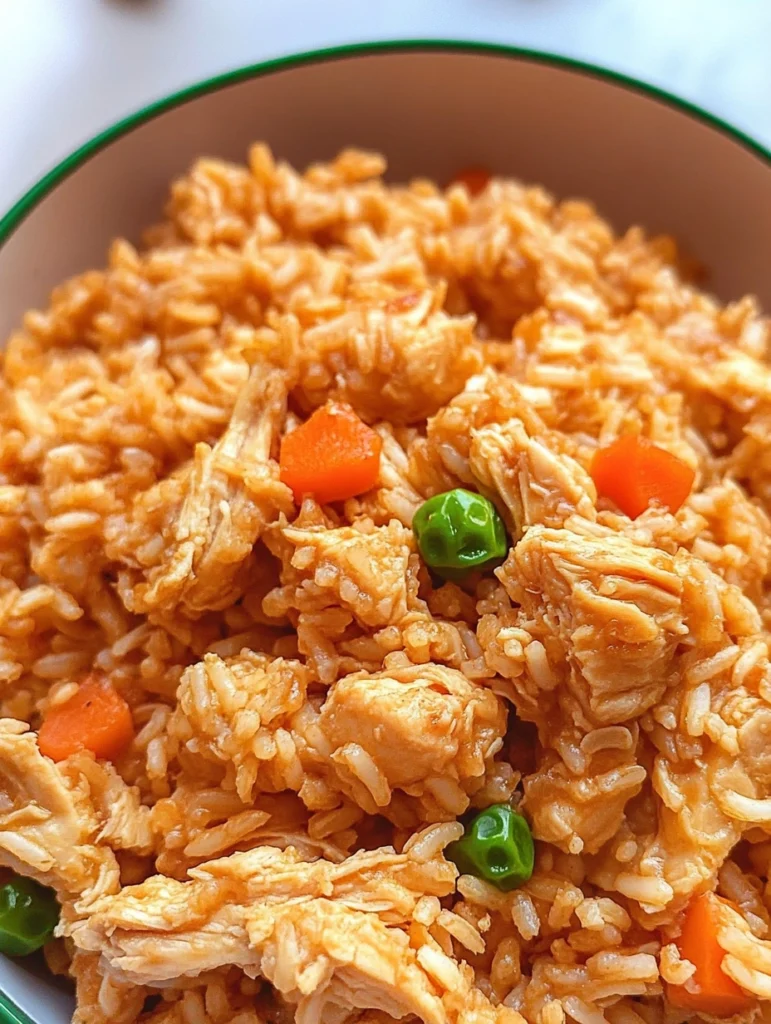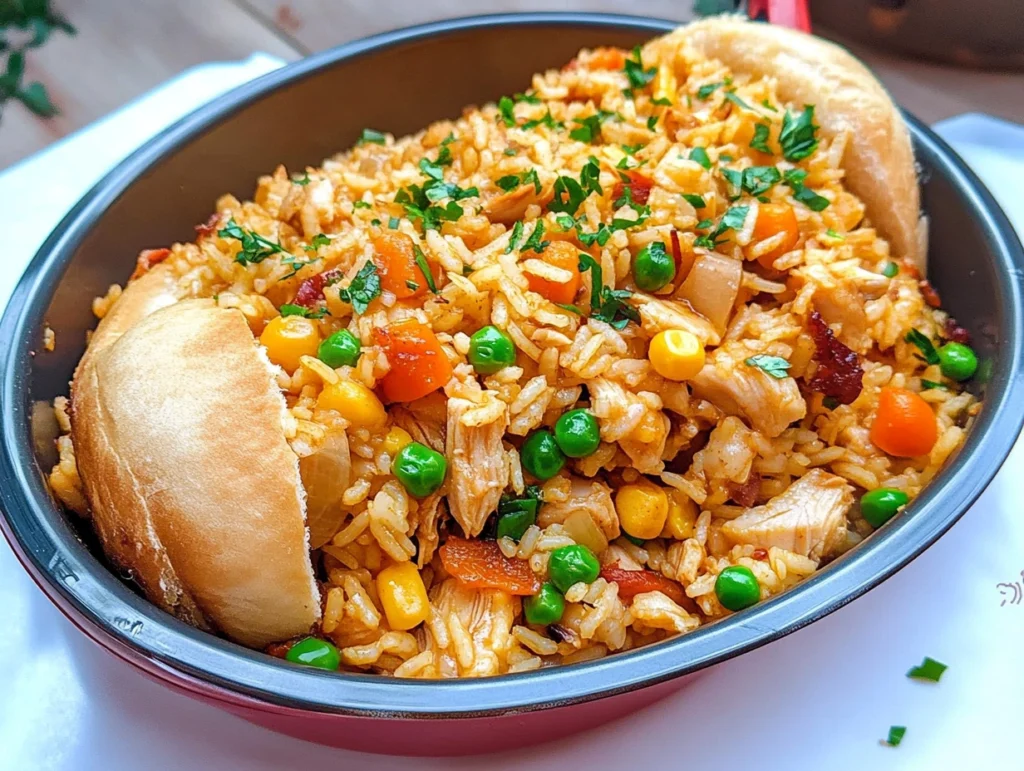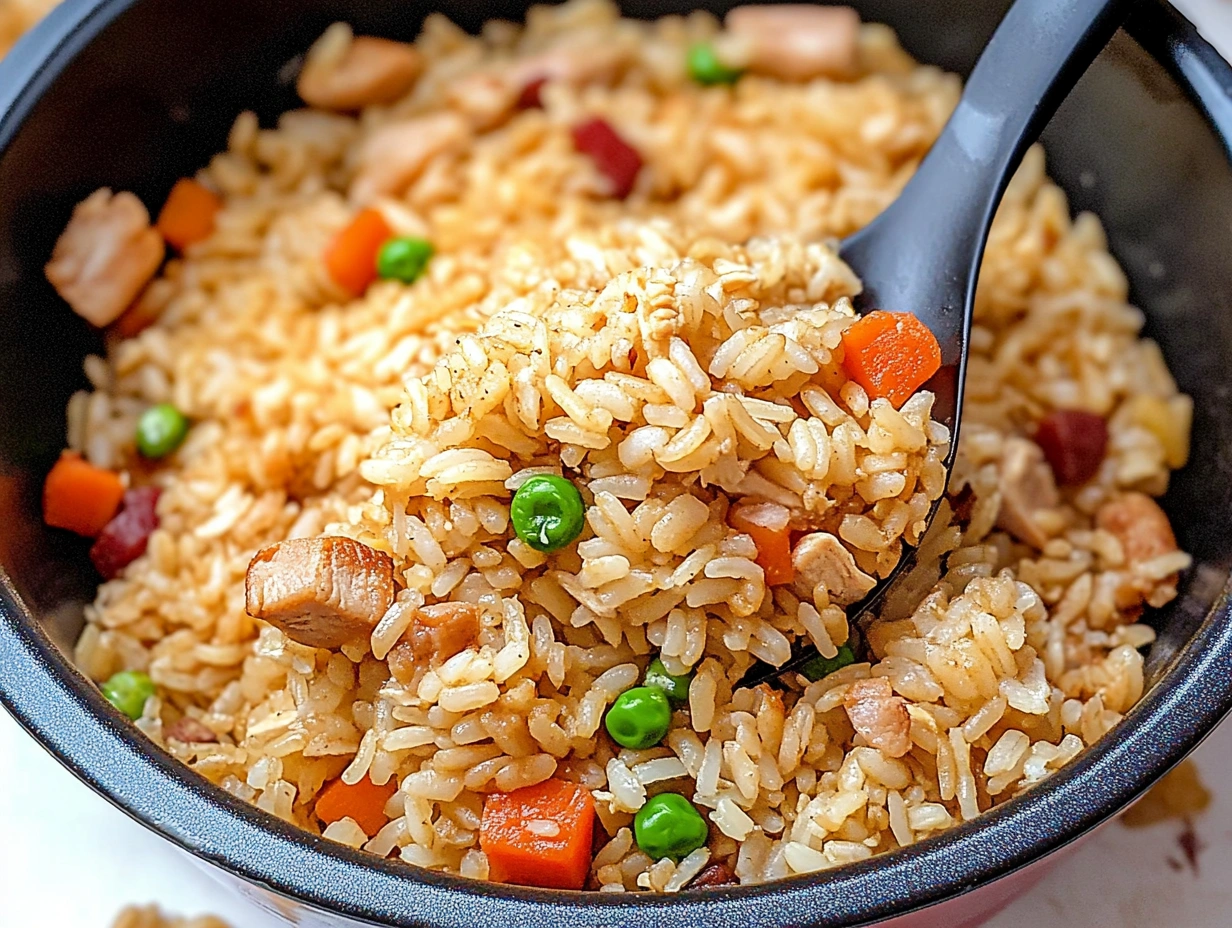Every pet owner wants the very best for their beloved furry companion. I learned that store-bought dog food wasn’t enough for my German Shepherd. That’s when I found a homemade chicken and rice dog food recipe that changed his health and energy.
Making your own dog food lets you choose what your pet eats. A chicken and rice recipe gives a balanced meal that boosts your dog’s health. It’s more than just food—it’s love and care in every bite.
This guide will show you how to make a tasty and healthy chicken and rice dog food recipe. It’s perfect for any dog, from playful puppies to older dogs. Homemade meals give your pet the nutrition they need that commercial foods might not.
Key Takeaways
- Homemade dog food offers complete nutritional control
- Chicken and rice provide essential protein and carbohydrates
- Fresh ingredients support better canine health
- Customizable recipes suit individual dog needs
- Cost-effective alternative to premium commercial dog foods
Table of Contents
Benefits of Homemade Dog Food
Preparing dog food at home lets pet owners control their pets’ nutrition. You can make sure your pet gets the best meals, tailored to their needs.
Nutritional Control and Quality
When you make dog food yourself, you know every ingredient. This is key for senior pets, who need balanced nutrition. You can:
- Select premium, fresh ingredients
- Avoid preservatives and artificial additives
- Customize meals for specific health requirements
“Knowing exactly what goes into your dog’s food is the first step toward optimal pet health.” – Veterinary Nutrition Expert
Cost-Effectiveness
Making dog food at home can save money. Buying ingredients in bulk and cooking at home can cut down on costs. You still get high-quality nutrition.
Food Safety and Freshness
Homemade dog food is always fresh and safe. You control:
- Ingredient sourcing
- Cooking methods
- Storage conditions
Your dog deserves meals prepared with love, care, and attention to nutritional detail.
Essential Ingredients and Their Benefits
Making a healthy chicken and rice dog food recipe needs the right ingredients. These ingredients should give your dog balanced nutrition. The mix of proteins, carbs, and nutrients is key for your dog’s health.

Here are the main ingredients for a great chicken and rice dog food recipe:
- Lean Protein Sources: Chicken or ground turkey are great for muscle growth and energy.
- Complex Carbohydrates: White or brown rice is easy to digest and gives energy.
- Nutrient-Rich Vegetables: Carrots, peas, and sweet potatoes add important vitamins and minerals.
When making ground turkey dog food, choose lean cuts to cut down on fat. Ground turkey is a good protein choice for dogs who can’t eat chicken or need a change in their diet.
Veterinarians suggest talking to a professional to make sure your homemade dog food is complete and balanced.
Important nutrients to think about in your chicken and rice dog food recipe include:
- Omega-3 fatty acids for a healthy coat
- Calcium for strong bones
- Vitamin E for a strong immune system
Your dog’s needs change with age, weight, and how active they are. Adjusting the recipe to fit these needs ensures they get the best nutrition and stay healthy.
Chicken and Rice Dog Food Recipe: Step-by-Step Guide
Making dog food at home is rewarding and good for your pet. This chicken and rice recipe is healthy and meets your dog’s needs.
When making dog food, pay close attention to what you use and how you cook it. Make sure each batch is right for your dog’s diet.
Preparation Time and Servings
- Total Preparation Time: 45-60 minutes
- Servings: About 5-7 days of meals
- Batch Size: Good for medium to large dogs
Cooking Instructions
- First, get your ingredients ready for the chicken and rice recipe:
- 3 lbs lean ground chicken
- 4 cups brown rice
- 2 ½ cups mixed frozen vegetables
- 6 ½ cups water
- Cook the ground chicken in a big pot, breaking it up
- Add rice and water, then boil gently
- Lower the heat and simmer for 20-25 minutes
- Add frozen veggies in the last 5 minutes
- Let the food cool down before feeding it to your dog
Storage Tips
Keeping your dog food fresh is key. Store it in airtight containers in the fridge for 5-7 days. You can also freeze portions for longer.
Pro Tip: Always check with your vet before changing your dog’s diet.
Tip: Mix up ingredients and talk to a pet nutritionist for a balanced diet.
Nutritional Modifications for Special Dietary Needs
Creating homemade dog food for senior pets needs careful planning. As dogs get older, their dietary needs change. This is key to keeping them healthy and full of life.

When making dog home food for seniors, remember these important changes:
- Reduce calorie density to match lower metabolism
- Increase easily digestible protein sources
- Add joint-supporting supplements
- Choose softer, more palatable ingredients
A special homemade dog food recipe for seniors might include:
- Lean ground beef or chicken
- Cooked brown rice
- Steamed vegetables
- Hard-boiled egg
- Pureed pumpkin
“The right nutrition can transform your senior dog’s quality of life” – Veterinary Nutrition Experts
Portion control is critical. Serve 1/2 cup per 25-30 pounds of body weight, twice a day. Adjust based on your dog’s health and activity level.
Dogs with digestive issues do well with bland, easy-to-digest foods. White rice, boiled chicken, and pumpkin can help. Talk to your vet to make a nutrition plan that fits your senior dog’s needs.
Adding Healthy Vegetables and Supplements
Adding nutritious vegetables and supplements to your dog’s food can make a big difference. It turns a simple meal into a nutrient-rich treat. Knowing which ingredients are best for your dog’s health is key.
Choosing the right vegetables is important for your dog’s diet. Not all veggies are good for dogs.
Safe Vegetable Options
- Carrots: Boost vision and support immune function
- Green Beans: Low-calorie option for weight management
- Sweet Potatoes: Packed with essential vitamins and minerals.
- Pumpkin: Excellent for digestive health
- Spinach: Provides essential nutrients
Essential Supplements
Home-made dog food can benefit from supplements. Your vet can recommend the appropriate ones based on your dog’s specific needs.
| Supplement | Primary Benefit | Recommended Dosage |
|---|---|---|
| Omega-3 Fish Oil | Supports skin and coat health | Based on dog’s weight |
| Multivitamin | Fills nutritional gaps | Daily, as recommended |
| Probiotics | Improves digestive health | As directed by vet |
Portion Control Guidelines
Start with small amounts of new foods. Monitor your dog’s response and make adjustments if necessary. Vegetables should make up no more than 10% of the meal.
It’s important to consult a veterinarian before making major changes to your dog’s diet.
Tips for Transitioning Your Dog to Homemade Food
Switching your dog to homemade food needs careful planning and patience. This transition is key for your pet’s health, especially for senior dogs. Their systems are more sensitive.

When introducing homemade dog food, follow a strategic approach. This helps avoid digestive upset:
- Begin by offering small servings of the homemade dog food
- Gradually increase the new food’s proportion
- Watch your dog’s reaction closely
- Maintain consistent meal times
For senior pets, the transition is more delicate. Older dogs have more sensitive digestive systems. They need a gentler approach.
Here’s a recommended transition timeline:
- Days 1–3: Mix 25% new food with 75% of their current diet.
- Days 4-6: 50% new food, 50% current diet
- Days 7-9: 75% new food, 25% current diet
- Day 10 onwards: 100% homemade food
Watch for signs of digestive stress during the transition. Look for:
• Reduced appetite
• Soft stools
• Occasional vomiting
If your dog shows persistent digestive issues, see your vet right away. They can provide personalized guidance based on your pet’s specific dietary needs.
Conclusion
Preparing chicken and rice dog food at home is a wonderful way to ensure your dog eats well. It gives you full control over the ingredients, helping you provide exactly what your pup needs.
Making homemade meals for your dog does take time and thoughtful planning. Experts, including veterinarians, recommend consulting a pet nutritionist to make sure the food is balanced and complete. This extra effort can go a long way in supporting your dog’s health and happiness.
While it might seem challenging at first, the rewards are worth it. A well-crafted recipe can increase your dog’s energy, support their immune system, and promote overall wellness. Keep in mind that every dog has unique needs, so tailoring their meals is key.
Choosing to cook for your dog is a meaningful act of love. With patience, care, and expert guidance, you can turn mealtime into a healthy, happy ritual your furry friend will look forward to every day.
FAQ
Is homemade dog food better than commercial brands?
Homemade dog food gives you full control over the ingredients, helping you avoid preservatives and additives. This can lead to a healthier, more tailored diet for your dog.
How can I make sure homemade dog food is nutritionally balanced?
Consulting your veterinarian is essential. They can help you create a recipe that includes the right balance of protein, fats, carbs, vitamins, and minerals.
Can I use ground turkey instead of chicken?
Yes, ground turkey is a lean and healthy alternative to chicken. Just be sure it’s fully cooked and free of any seasoning, onions, or garlic, which can be harmful to dogs.
How long does homemade dog food last?
Keep it sealed in an airtight container and refrigerate for up to 3–5 days. To store it longer, place it in the freezer for up to 2–3 months. Always thaw safely and check for freshness before serving.
Are there special dietary needs for senior dogs?
Yes, older dogs often require fewer calories, lower protein, and added joint support. Your vet can recommend specific nutrients and supplements to support your senior dog’s health.
What vegetables are safe for dogs?
Dog-friendly veggies include carrots, green beans, sweet potatoes, pumpkin, and spinach. These add fiber and nutrients. Avoid onions, garlic, and anything spicy.
What’s the best way to transition my dog to homemade food?
Transition slowly over 7–10 days. Start with 25% homemade food and 75% of their current food, gradually increasing the homemade portion. Watch for any digestive changes.
Do homemade dog food recipes need supplements?
Yes, most homemade diets benefit from added nutrients. Common supplements include calcium, omega-3 fatty acids, and a vet-approved multivitamin. Always consult your vet before adding supplements.
chicken and rice dog food recipe/chicken and rice dog food recipe/chicken and rice dog food recipe/chicken and rice dog food recipe/chicken and rice dog food recipe/chicken and rice dog food recipe/chicken and rice dog food recipe.

